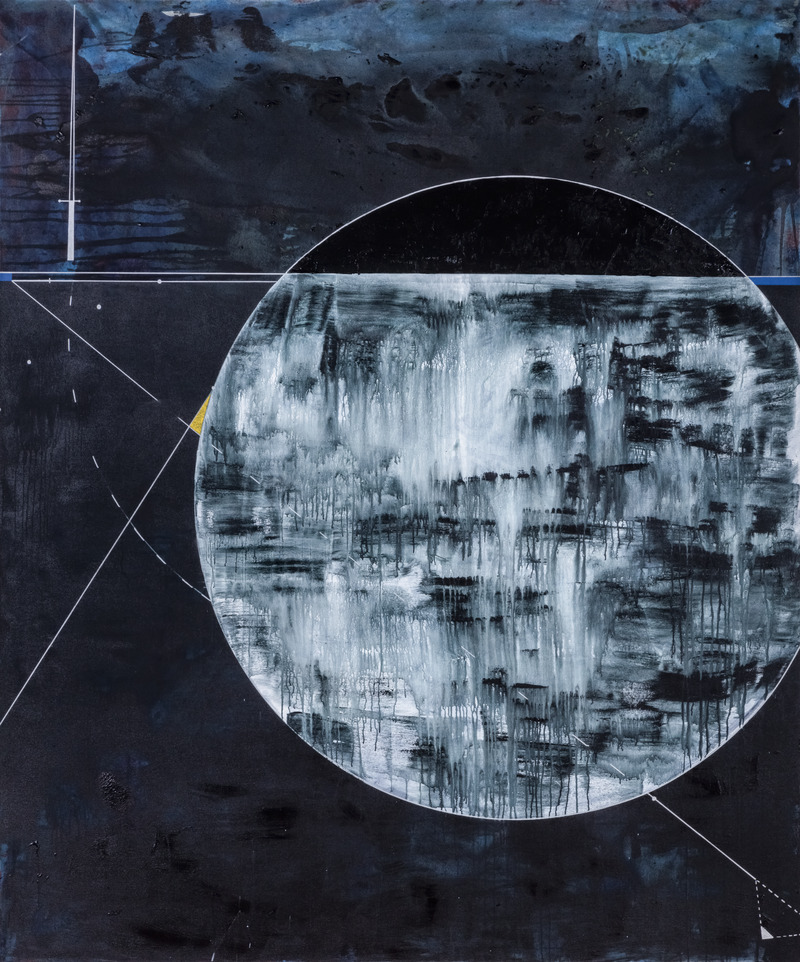Torkwase Dyson: Bird and Lava
James M. Kemper Gallery, Room 3
Torkwase Dyson’s artwork engages urgent issues regarding architecture, infrastructure, and the social and political impacts of the climate crisis—bringing them into conversation with historical and contemporary reflections on the agency and brilliance of Black and brown people’s spatial practices. Anchored by the new acquisition A Place Called Dark Black (Bird and Lava) (2020), the James M. Kemper Gallery and the Video Gallery on the lower level present an expansive view of the artist’s Bird and Lava series (2020–ongoing). The works on display span abstract painting, drawing, sculpture, animation, and architectural models that explore histories of Black resistance and spaces of self-liberation.
As a starting point, Dyson employs a compositional system of geometric shapes—squares, trapezoids, and curved lines—derived directly from architectural spaces used and invented by individuals to escape slavery’s built environment in the United States. The square refers to Henry “Box” Brown, who shipped himself in a box from Richmond to Philadelphia in 1849. The trapezoid is culled from the experiences of Harriet Jacobs, who spent seven years in an attic crawlspace, as recounted in her autobiography, Incidents in the Life of a Slave Girl (1861). The curve comes from the hull of a ship, such as the one in which Anthony Burns escaped from Richmond to Boston in 1854. Used collectively the artist refers to these forms as “hypershapes.”
Dyson’s compositions often suggest interstitial spaces, horizon lines, enclosures, and ocean depths, evoking themes of containment and expansion. The geography of the Atlantic Ocean and its relationship to the Plantationocene—a term first used by the scholar Donna Haraway to highlight the ways in which the logic and structures of the plantation and the plantation economy within global capitalism operate today—is present throughout. Dyson’s abstractions gesture to waterways and infrastructures that have been sites of colonial trauma as well as spaces of survival and resilience.
Four stop-motion animations on view in the lower-level Video Gallery are similarly imbued with a sense of liquidity. Created by Dyson using the camera on her cell phone, these short, improvisatory drawing sessions emphasize materials, process, and touch. Made during the height of the pandemic, these works reflect the artist’s urgent need to “feel liquid,” to “feel earthed,” and to “make space.”
Concurrently, Bird and Lava (Scott Joplin), an outdoor, sonic, site-specific installation, will be on view from April through July in St. Louis Place Park at Benton Street and Rauschenbach Avenue, near the Griot Museum of Black History. The installation was commissioned by Counterpublic, a triennial exhibition of public artworks that engage the city’s histories. The artist’s architectural renderings of the commission and related maquettes are on view here. Expanding Dyson’s core vocabulary of hypershapes onto the scale of the built environment, this newest work, like the Bird and Lava series overall, invites us to consider the sociopolitical potential of shape, surface, and material to envision new, livable worlds.
The exhibition is curated by Meredith Malone, curator, Mildred Lane Kemper Art Museum.
Selected works

Torkwase Dyson
A Place Called Dark Black (Bird and Lava)
2020Support
Support is provided by the William T. Kemper Foundation.